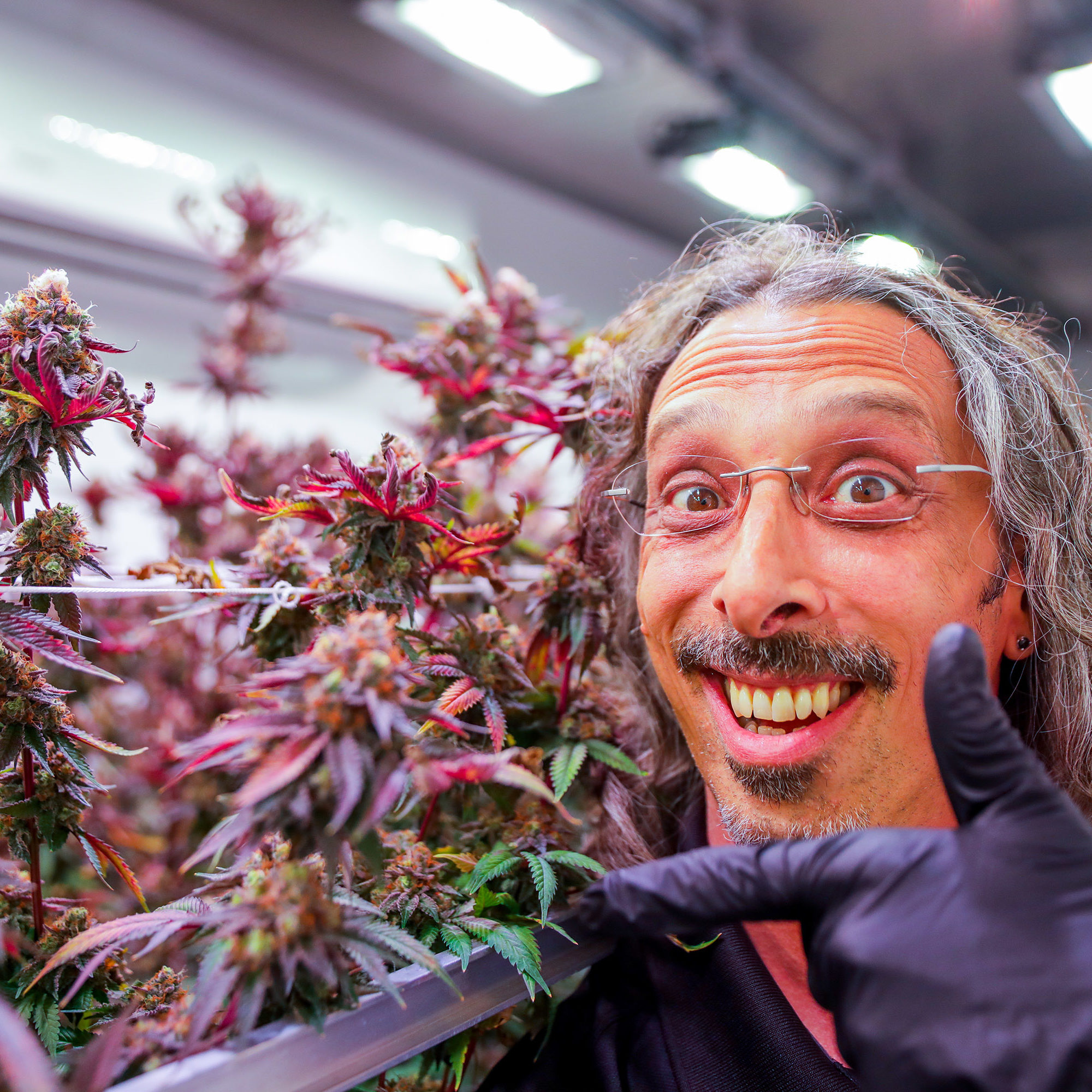Marijuana Growing Systems :LST Plant Training
With every passing day there are more techniques for marijuana cultivation available within the international cannabis market. Cannabis is a robust, vigorous and fast-growing plant which responds well to traditional crop improvement methods such as pruning and super cropping. One less discussed method is what many professional growers call LST or Low Stress Training. All of these techniques originated in the traditional agricultural industry and have been proven over millennia to improve yield or facilitate harvesting. LST is no exception.
Simply put, LST is bending and tying plants back to train them into a shape that grows more efficiently. It's like gently encouraging the plant to maximize its yield by itself. Of course it’s the opposite to HST (High Stress Training) methods like pruning which physically force the plant into maximizing growth by damaging it. LST of course, can be combined with HST cultivation methods.

How to Start your LST Plant Training
Tell Me More About LST!
LST works by bending, tying or weighing down upper branches so that they grow more horizontally, away from the center of the plant. Without training, a cannabis plant will naturally grow in a sort of conical shape, with one main stem taller, thicker and stronger than all the others. This is perfectly normal in the “wild” where the movement of the sun during the day creates even light coverage but in agriculture means that lower parts of the plant struggle to get light.
Indoor growth in a hydroponics container farm is adaptable and there are systems where the lighting or plant can move but this may be prohibitively expensive for most.
Benifits of LST Training for Cannabis Production
However, by always bending down its main colas, you can gently shape the plant plant into a shorter, bushier plant with a more even canopy. Light doesn’t have to penetrate so far and more of the plant is exposed to it so it can grow more effectively.
The other big benefit is that when you bend a main cola, it causes the plant to grow more colas and remove the stress the cannabis experience. The plant believes it has lost its main branch and starts to try and replace it. The old main cola will still continue to grow and ultimately produce buds, but so too will these new growth sites resulting in even greater yield.
Why Train?
Historically training methods were developed for cannabis to limit the height of the crop. This is useful for outdoor growers to maintain security below walls and fences. With the growth of container farming and hydroponics the more common reason is to maintain some distance from indoor lamps by cutting the growing tips of the plants.
LST encourages the development of secondary branches and maximizes light to the lower parts of cannabis. This creates buds all over the plant, rather than in one massive central cola. This is a huge advantage in environments with high humidity during the flowering period, as growing one enormous bud makes the plants much more prone to mold or bud rot which can be a risk. It’s always better to try and diversify risk by developing a larger quantity of smaller flowers, evenly distributed over the plant.
Another benefit of an even light coverage is that all the buds will be ready at the same time, as opposed to untrained plants where the upper flowers mature before the lower flowers. This allows growers to work more efficiently at harvest time, cutting down whole plants, rather than having to remove the tops then come back later for the lower buds. If you’re growing industrial scale medicinal cannabis with a hydroponics container farm this ability to produce large crops with high yield regularly can be crucial to your business model.
How to Train Cannabis Plants
Cannabis branches are naturally flexible making them relatively easy to bend without halting growth, as long as the grower is careful not to break the plant.
By simply using a string, the top of the plant can be fixed a few nodes below the growing tip to an anchor point nearby. This can be as simple as attaching the string to the rim of the pot, or a stick or hook firmly pushed into the soil. The grower starts by lightly bending the stem, and gradually increasing the tension slightly every day, until happy with the position. It's important to pay attention to how the plant reacts (which can be different from plant to plant on the same container room) and to not over-tighten the string.
There are some simple guidelines. Firstly, don’t use string that’s too fine and which could accidentally cut or constricting the branch as the branch grows.
It's generally a good idea to use thick, brightly colored cord. Making sure it’s visible, helps the grower to avoid accidents.
To get the most out of plants, training is best done in the evening, or just before the lamps are turned off in a container grow system. This allows the plants to recover overnight and the next day we can inspect to see any reactions.
Using a Trellis or Mesh in Marijuana Growing Systems
In many hydroponic and shipping container grows we can use a trellis or mesh to separate and support the branches. By placing the trellis situated horizontally above the plant the grower allows the branches to weave through the holes to hold them in place.Trellis can also be placed vertically, allowing the grower to train the plant in two dimensions, Which can be a useful way of supporting plants and maximizing space.
Weight training for Cannabis plants
A different approach to training cannabis plants is the use of small weights to gently and gradually bend branches, permitting growers to shape plants, opening them up to greater light exposure, increasing secondary branching and at the same time strengthening the branches and preparing them for the weight of the buds. This method can be particularly useful in outdoor cultivation, where using small weights offers the advantage of allowing plants to move and sway in the wind, which, in combination with the weights will greatly reinforce branches.
The weights themselves should be small, not too heavy. Indeed growers can even use small items from a hardware store like steel nuts and washers attached by a thread, The weights can be removed as the buds increase in size and weight, to ensure branches are not overloaded

Mistakes to Avoid
We’ve covered most of these already above, but here’s a summary checklist of what to avoid when you start low stress training your marijuana.
- Don’t start too late. Mature branches will be stronger and easier to break.
- Only bend soft, bendable growth. If a branch feels stiff where you want to bend it, try bending it at a higher node.
- Don’t use wire or anything sharp and thin that could cut into the stems as they grow.
- If you do “wound” the plant or break a stem while bending, tape it up to keep the damaged area clean and ensure the stem has support. Often, it will recover cleanly.
- Make sure that your ties are securely attached, not slipping and scraping against the stem. You may need to distribute the pressure more evenly by tying the branch in more than one place.
LST for Marijuana- Make It Work for You
Like everything else, it takes a bit of practice and experimentation to get the best from it. But the more you use LST the more you’ll get a feel for it.
There are plenty of ways to shape and train plants without resorting to damaging them and subjecting them to the stress and the risk of infections associated with high stress methods. By using LST cannabis grow system users can achieve the perfect structure for our plants, but without halting or slowing growth, and leading to healthier plants and bigger yields.
Contact now Micro Lab Farms and let us help you on cultivating your cannabis production through LST growing system in container farms.
Address
Micro Lab Farms
3353 Needles Hwy
Needles, CA
(951) 266-6096
